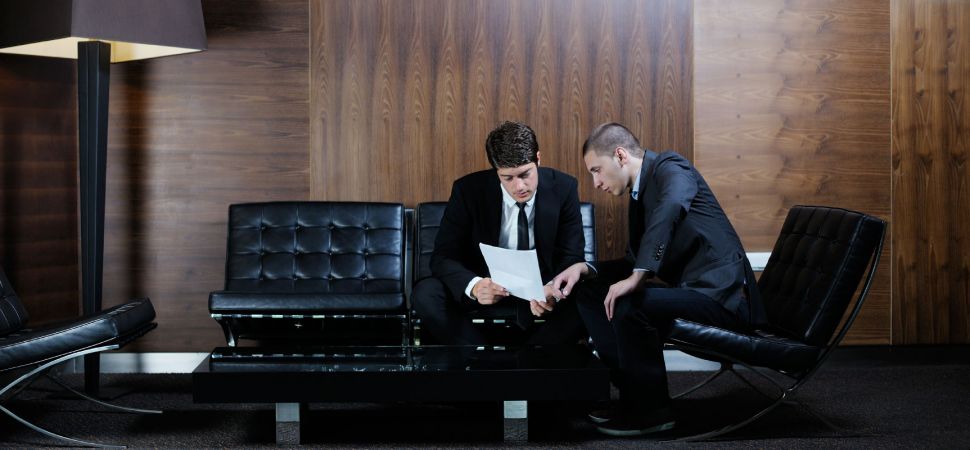Ryan Buell, an assistant professor at Harvard Business School (HBS), Tami Kim, a doctoral student at HBS and Chia-Jung Tsay, an assistant professor at University College London filmed the staff and diners in the following situations at a buffet cafeteria for two weeks where: (1) Patrons and cooking staff could not see each other; (2) Customers could see the cooks; (3) Chefs could see the diners and (4) Cooks and diners could see each other. They conducted surveys of the restaurant clients regarding the level of the service and the quality of the food. Their findings showed that when the cooks could see their customers, clients gave their dining experience higher ratings.
(1) Lesson: Help employees see the impact of their work.
Harvard Business School Professor Ethan Bernstein planted researchers on factory lines in China. In this particular plant, supervisors sat adjacent their employees.
Bernstein got the facility’s permission to put up curtains that separated supervisors from their direct reports. He discovered a phenomenon called the Transparency Paradox; when workers were hidden from their supervisor, their productivity increased by 15%.
(2) Lesson: Give employees freedom and autonomy to perform even if it means doing it secret.
Robert Cialdini, President of Regents’ Professor of Psychology and Marketing at Arizona State University (ASU, Robert Cialdini of ASU and Vladas Griskevicius of University of Minnesota did some experiments at a hotel trying to get guests to reuse their towels.
They developed 3 different signs to be posted in the hotel rooms. Message 1 simply asked customers to reuse their towels. Message 2 indicated reusing towels would be good for the environment. Message 3 specified that 44% of patrons who stayed in this room reused their towels.
Here were the results. Message 1 increased towel reuse by 33%. Message 2 improved towel recycling by 44%. Message 3 persuaded visitors to salvage their towels by 75%.
(3) Lesson: Let employees come up with their own reasons for doing their work.
A university planned to sponsor a food drive. They asked students which type of letter would motivate them to donate food. Letter 1 was a general letter that announced the date of the food drive and the donation location. Letter 2 was a more specific letter that listed multiple drop-off locations and gave students a choice of what items they wanted to contribute.
Only 8% of students indicated they would contribute with Letter 1. 44% of students signaled they would donate with Letter 2.
(4) Lesson: Give employees off-ramps that make it easier for them to perform their jobs.
Adam Grant, a professor at Wharton University of Pennsylvania led a University of Michigan study while he was a graduate student of a scholarship fundraising call center which suffered from a rejection rate of 93%.
Drawing on his earlier lessons of selling advertising space for his school newspaper as an under graduate, he realized he sold more ads for the publication when he motivated himself by thinking about all the people that the newspaper helped. He discovered that the more he saw the job as a way for him to make commissions on his sales, the less motivated he was. When he saw his role as being an advocate for those serviced by the newspaper, his motivation soared and he sold more ads.
Grant thought this experiment could work with the call center whose major objective was to bring in more donations for scholarships. He brought in a student who testified to center volunteers about how much his scholarship changed his life and prepared him for a teaching career working with disadvantaged students.
A month later, Grant saw a surprising shift in the productivity of the call center. Phone time increased by 142% and revenue increased by 171%. He continued the practice of helping call center staff connect with the beneficiaries of their work by showing them thank you letters from students who received scholarships.
(5) Lesson: Knowing our work helps others increases our unconscious motivation.
Teresa Amabile, an Edsel Bryant Ford Professor of Business Administration in the Entrepreneurial Management Unit at Harvard Business School, led a study that provided 460 works of art to an independent group of evaluators. The collection of art was equally split between commissioned and non-commissioned works. The team’s findings were startling. The non-commissioned art was judged more creative than the commissioned pieces.
(6) Lesson: When we put restraints and limitations on our employees, their creativity and productivity go down.
These studies show that the more we let our people go as opposed to shackling them to their desks, the more productive they will be. Good luck in finding your autonomy, mastery and purpose in the public space. I know some underserved taxpayers and an angry electorate that are waiting on the results.





Leave a Reply
You must be logged in to post a comment.